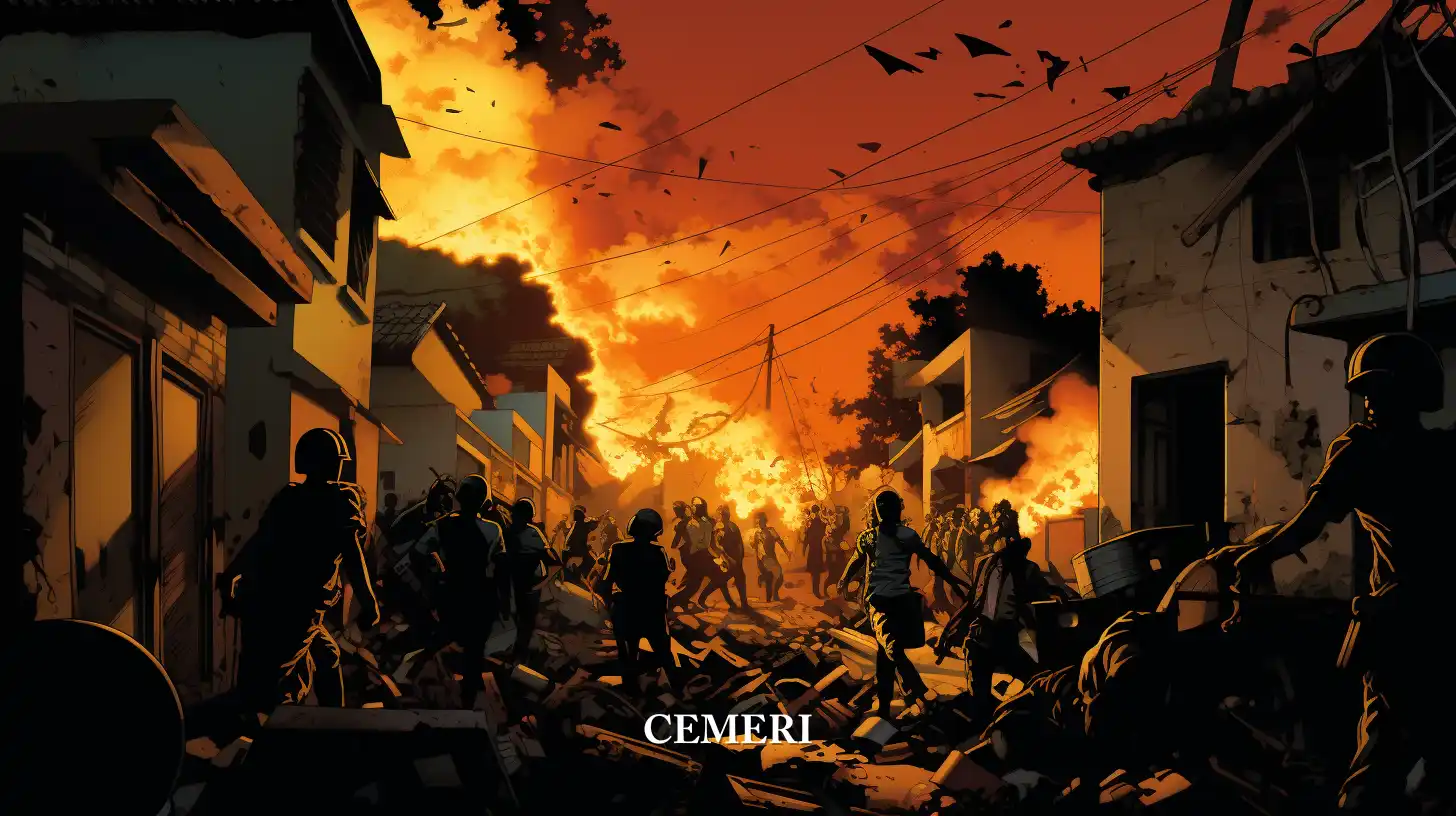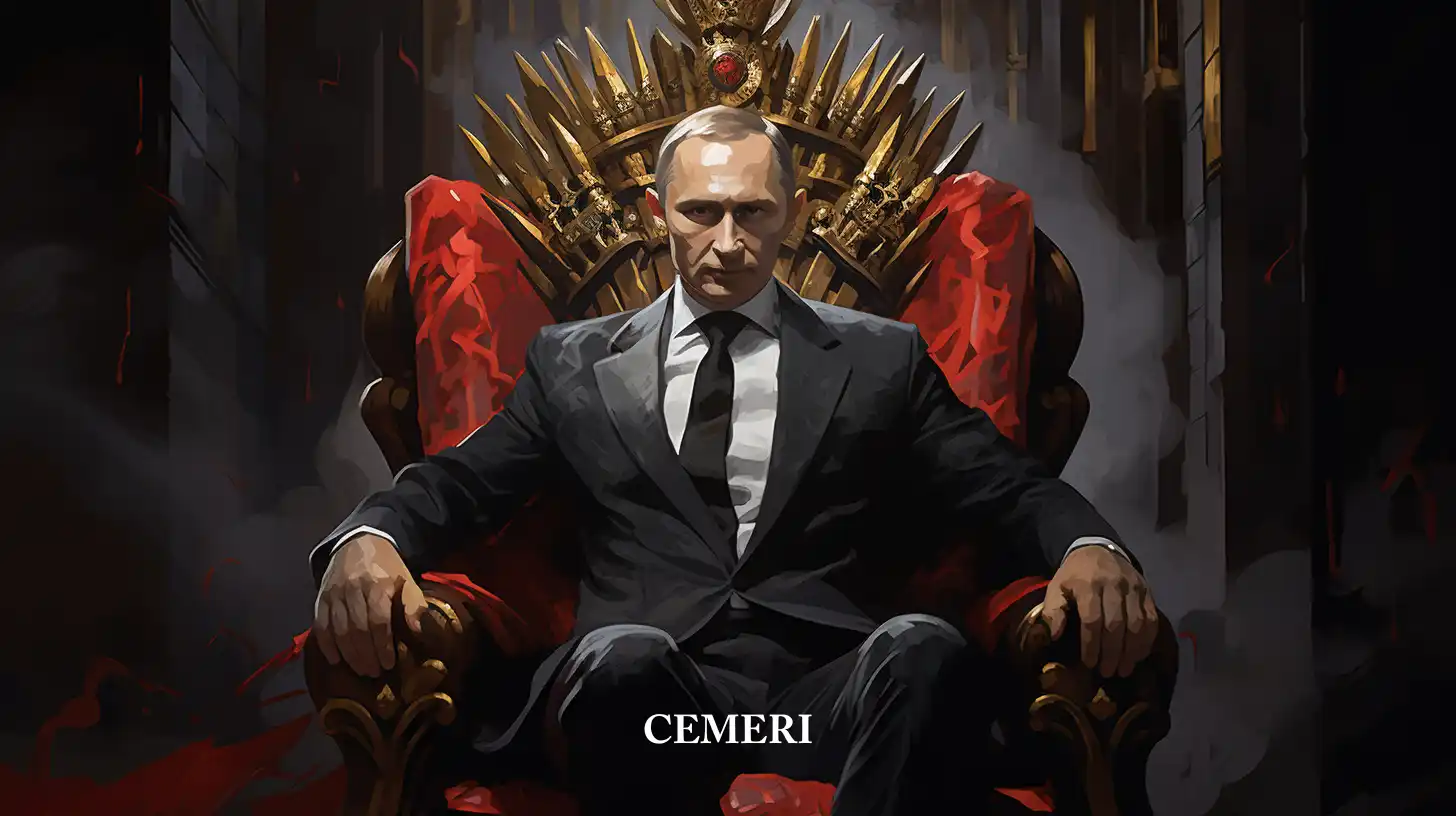Analysis
Conflict in Chechnya
- The Conflict in Chechnya: A History of Struggle, Autonomy, and Violence That Defies Boundaries.
The conflict in Chechnya has been a constant struggle that has spanned throughout Russian history. This region, located in the Caucasus, has experienced a series of political and ethnic conflicts, primarily driven by the Chechen desire for autonomy and independence.
Independence under Dudayev (1991-1994)
During Dzhokhar Dudayev's leadership, Chechnya declared independence from Russia, initiating a phase of secession that continues to this day. This perceived challenge to Russia's territorial integrity posed serious challenges for the Russian government and fueled a cycle of violence.
The arrival of Dzhokhar Dudayev to power marked a significant turning point in Chechnya's history. Dudayev, a former Soviet general, became the country's leader following the collapse of the Soviet Union in 1991 and quickly sought to break away from Kremlin authority and establish Chechnya's independence from Russia. This secession attempt was a direct affront to Russia's territorial integrity and elicited a strong response from the Russian government. Unwilling to allow such a strategic region to separate, Russia responded with a large-scale military offensive, arguing that its action was necessary to maintain territorial integrity and state security. This reaction by Russia unleashed a cycle of violence that continues to this day. Tension and conflicts have persisted, fluctuating between periods of violent military confrontation and quieter but equally tense political episodes.
First Russo-Chechen Wars (1994-1996)
Between 1994 and 1996, Russia launched a military invasion against Chechnya to suppress the Chechen rebellion. This conflict claimed thousands of lives and ended with a ceasefire in 1996, followed by a series of negotiations that culminated in the Khasavyurt Accord. The Russian invasion of Chechnya between 1994 and 1996 had profound and lasting implications for Chechnya and the power dynamics in the Caucasus region.
The Russian military offensive in Chechnya, which occurred between 1994 and 1996, was a significant stage in Chechnya's and Russia's history that had a significant impact. The conflict tragically claimed thousands of lives. However, in 1996, a ceasefire was reached, followed immediately by crucial talks that led to the creation of the Khasavyurt Accord. This agreement aimed to establish a peace settlement and resolution to internal conflicts, demonstrating how diplomacy and compromise can play a role in resolving violent conflicts. Nevertheless, the wounds left by Russia's invasion during those years persist to this day, prominently affecting Chechnya and the complex power dynamics in the Caucasus region. With a changing landscape, the memory of the conflict and its treatment in the present remain decisive factors in the immediate future and the development of new strategies to address persisting issues and current forms of violence.
Transition under Yeltsin and Terrorism (1996-1999)
During this period of chaos, Chechnya experienced a series of civil unrest and terrorist activities. The region became a hotbed of radicalism and militancy, posing serious challenges for Yeltsin's administration.
This period, marked by chaos, also witnessed a radical transformation in Chechnya's psyche. Sufficient military and social disasters had paved the way for the growth of radicalism and anti-government sentiment. Exiled Russian activists and Chechen dissidents fostered a sense of discontent and uprising against Kremlin-installed leaders. As a result, the region of Chechnya became a cauldron of militancy that continued to pose serious challenges for Yeltsin's administration. This period of instability left an indelible mark on the region's history, foreshadowing the bitter Russia-Chechen conflict and the challenges of autonomy that are still at stake today.
Second Russo-Chechen War
(1999-2004)
Vladimir Putin, who assumed power in 1999, initiated the second Chechen war. This Russian offensive was presented as an anti-terrorist operation aimed at eliminating radical threats and stabilizing the region. This war unleashed further violence and human rights abuses.
The second Chechen war unleashed by Vladimir Putin not only marked a dark stage in the annals of the Russo-Chechen conflict but also brought a cascade of human rights abuses and excessive violence. Putin, in his attempt to stabilize the turbulent region, justified the offensive as an anti-terrorist operation. However, the uncontrolled violence disregarded the dignity and basic security of Chechen citizens. The repression and brutality employed in his strategy often bordered on contravening international human rights laws.
From summary executions to forced disappearances and torture, the population of Chechnya endured a deluge of atrocities. Additionally, this war reinforced Putin's power, consolidating his authoritarian presence in Russian politics and his direct intervention not only in Chechnya but also in international affairs, such as the ongoing Russia-Ukraine war. Despite attempts at pacification and stabilization, the aftermath of this war continues to resonate in the turbulent Chechnya and has deepened the challenges faced by the country on its path to autonomy and self-assertion.
Putin and Conflict Management
Under Putin's authoritarian regime, the repeated conflicts in Chechnya have been contained but not resolved. Despite claims of 'victory' and 'peace restoration' operations, violence remains a persistent problem in Chechnya.
During the recent Russia-Ukraine war, reports have emerged of the deployment of private Wagner militias, led by Chechen Ramzan Kadyrov, to Ukraine. The role these Chechen forces will play in this broader conflict remains uncertain.
Conclusion
Chechnya stands at a crossroads. The region has experienced a tumultuous history of conflict and violence. The struggle for autonomy, Putin's authority, the rise of jihadism, and the recent involvement in Ukraine further complicate the situation. However, what is clear is that finding a lasting solution requires more than military responses; it necessitates a path towards reconciliation and respecting the Chechen desire for self-determination.
Sources
Dunlop, J. B. (1998). Russia Confronts Chechnya: Roots of a Separatist Conflict. Cambridge University Press.
Lieven, A. (1998). Chechnya: Tombstone of Russian Power. Yale University Press.
Cornell, S. E. (Ed.). (2001). Small Nations and Great Powers: A Study of Ethnopolitical Conflict in the Caucasus. Routledge.
Russell, J. (2007). Chechnya: Russia's 'War on Terror'. Routledge.
Sakwa, R. (2005). Putin: Russia's Choice. Routledge.
Herspring, D. R. (2009). Putin's Russia: Past Imperfect, Future Uncertain. Rowman & Littlefield Publishers.
Richmond, O. P. (Ed.). (2013). The Routledge Handbook of Ethnic Conflict. Routledge.
Hahn, G. J. (2010). Russia's Islamic Threat. Yale University Press.
Khassanov, R. (2018). The Chechen Conflict: Security Implications for Russia and the Caucasus. I.B. Tauris.

